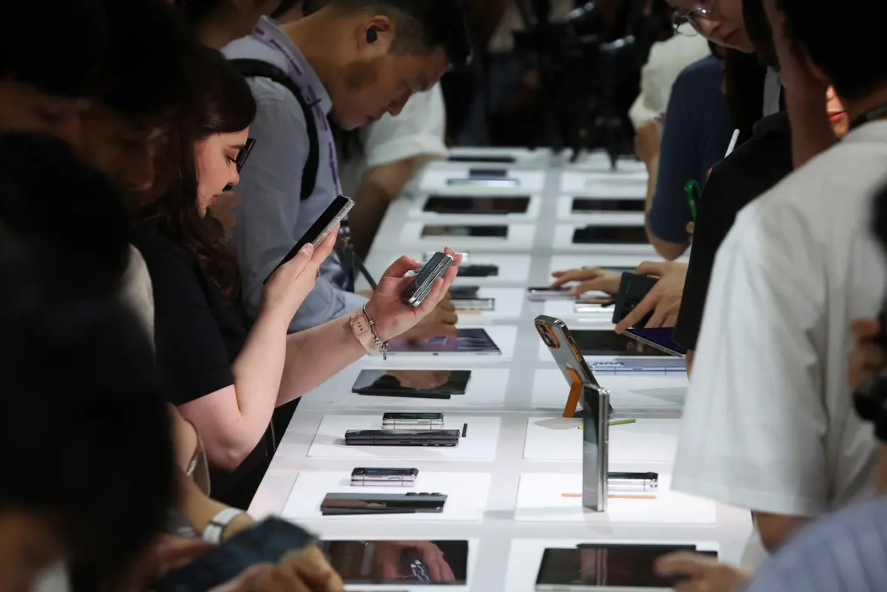
Experts are attempting to envision the shape and features of future smartphones, and as it pertains to electronics, technology, and the world of communication, it was logical to use artificial intelligence to predict what the smartphones of the future might look like.
According to a report by the British “Daily Mail,” the site Mobiles.co.uk predicted five different ways in which smartphones could evolve in the future, ranging from flexible phones to self-repairing devices, and what the future iPhone might look like.
While some ideas may seem like lines from a science fiction novel, experts say that these technologies may be closer to reality than we think.
Using a set of artificial intelligence tools, experts from Midjourney, Dalle3, and Adobe Firefly created images of what the smartphone of the future might look like. They asked AI programs to generate images and conceptualize a range of future phones based on different features and sustainable changes that are considered likely.
Amit Chatha, a mobile phone expert at Mobiles.co.uk, said, “Looking at the future of the mobile phone industry, it’s exciting to consider the possibilities of phones becoming more sustainable.” He pointed out that these could range “from solar-powered charging capabilities to more robust and adaptable external designs, smartphones could undergo radical changes in the next few years to meet environmental needs.”
One of the future technologies already on its way to application is the flexible phone. Foldable phones like the Motorola Razr Plus already use flexible materials to open and close a large touch screen. However, flexibility is currently limited to specific parts of the screen.
Sustainability consultant Jennifer von der Werdorf said, “Regarding flexible materials, with the introduction of flexible organic light-emitting diodes, this technology is widely available, and some manufacturers are deeply investing in it.” She explained that flexible phones like these could “make the device more durable, meaning they should last longer.”
The experts also suggest that phone charging might one day become as outdated as the wired landline phone is today. Von der Werdorf said, “As a source of renewable energy, solar power is virtually limitless, and the world has already seen many innovations.” Hikers and travelers are already familiar with a range of portable solar charging devices that can support devices for days away from a power outlet. While integrating solar panels into mobile phones as envisioned by experts and artificial intelligence is still far from reality, Japanese phone manufacturer Kyocera announced in 2016 that it developed a phone that can be charged in sunlight. The device works by incorporating a photovoltaic layer into the screen, which is supposed to get one minute of talk time for every three minutes in the sun. Of course, because most users tend to keep their phones in their pockets, the design never caught on.
Improvements in batteries and solar panels could make this technology applicable if they could be charged quickly enough during brief exposure to sunlight.
The exposure of the phone to breakage is annoying and costly for users and the environment. Instead of spending money on spare parts or even replacing the phone, experts say that future phones might be able to repair themselves.
Von der Werdorf said, “Manufacturing new devices and spare parts consumes a lot of energy and fossil fuels, so self-repairing phones would be a big step forward in the sustainability of smartphones.”
Perhaps the most futuristic technology on the list, Von der Werdorf also indicates that “it’s safe to say that discovering screen cracks, along with self-repair technology, is still under research and development for mass production.” It is not just a scientifically imagined concept, as scientists from Stanford University developed artificial skin that can heal itself using heat and magnetism in 2023. The skin is made of silicone and polypropylene glycol, which expands like human skin without tearing, while the magnetic properties of the skin allow it to align itself.
If waiting for self-repairing phones seems far-fetched, the next best solution is to improve the currently available phones. While work is being done for a more climate-friendly future, experts say that the mobile phone industry will begin to use more sustainable resources. The smartphone industry affects the world’s resources as it consumes significant amounts of rare metals such as cobalt for its production. Over 70% of the world’s cobalt is extracted in the Democratic Republic of the Congo, where child labor and appalling conditions prevail.
It’s worth mentioning that a study conducted in 2019 found that increasing the lifespan of smartphones in Europe by just one year could save a significant amount of carbon emissions, equivalent to removing two million cars from the roads annually. One easy way to achieve this is to facilitate smartphone repairs. Using better materials and improved designs in smartphone manufacturing might make the future phone more environmentally friendly.
Leave a Reply